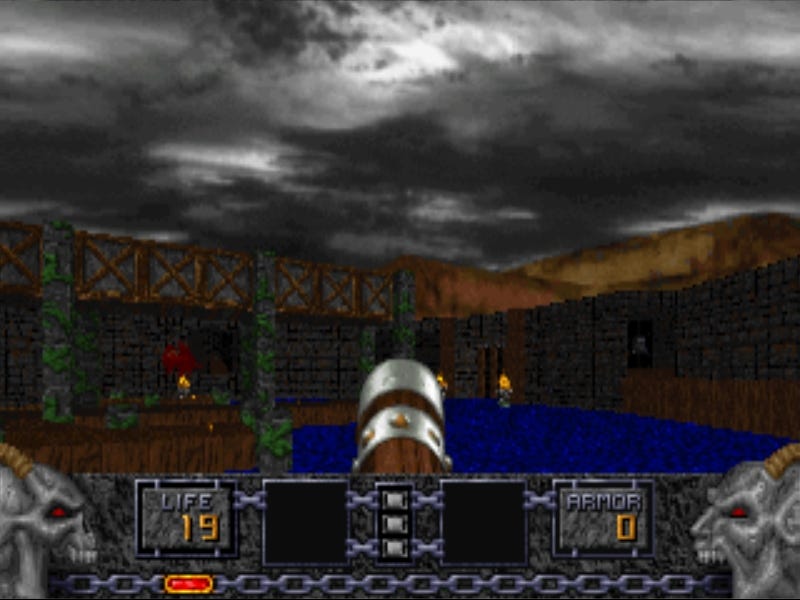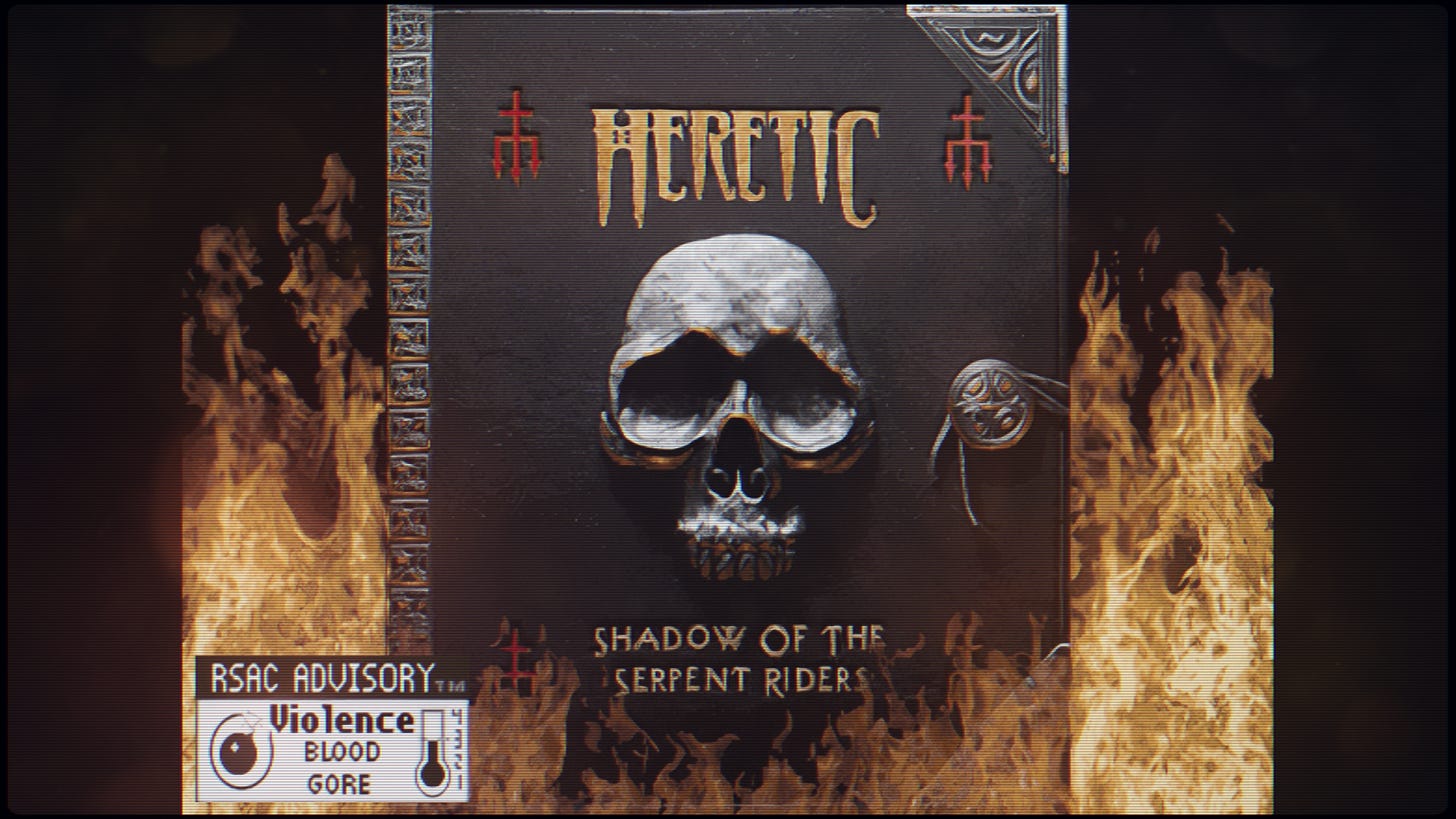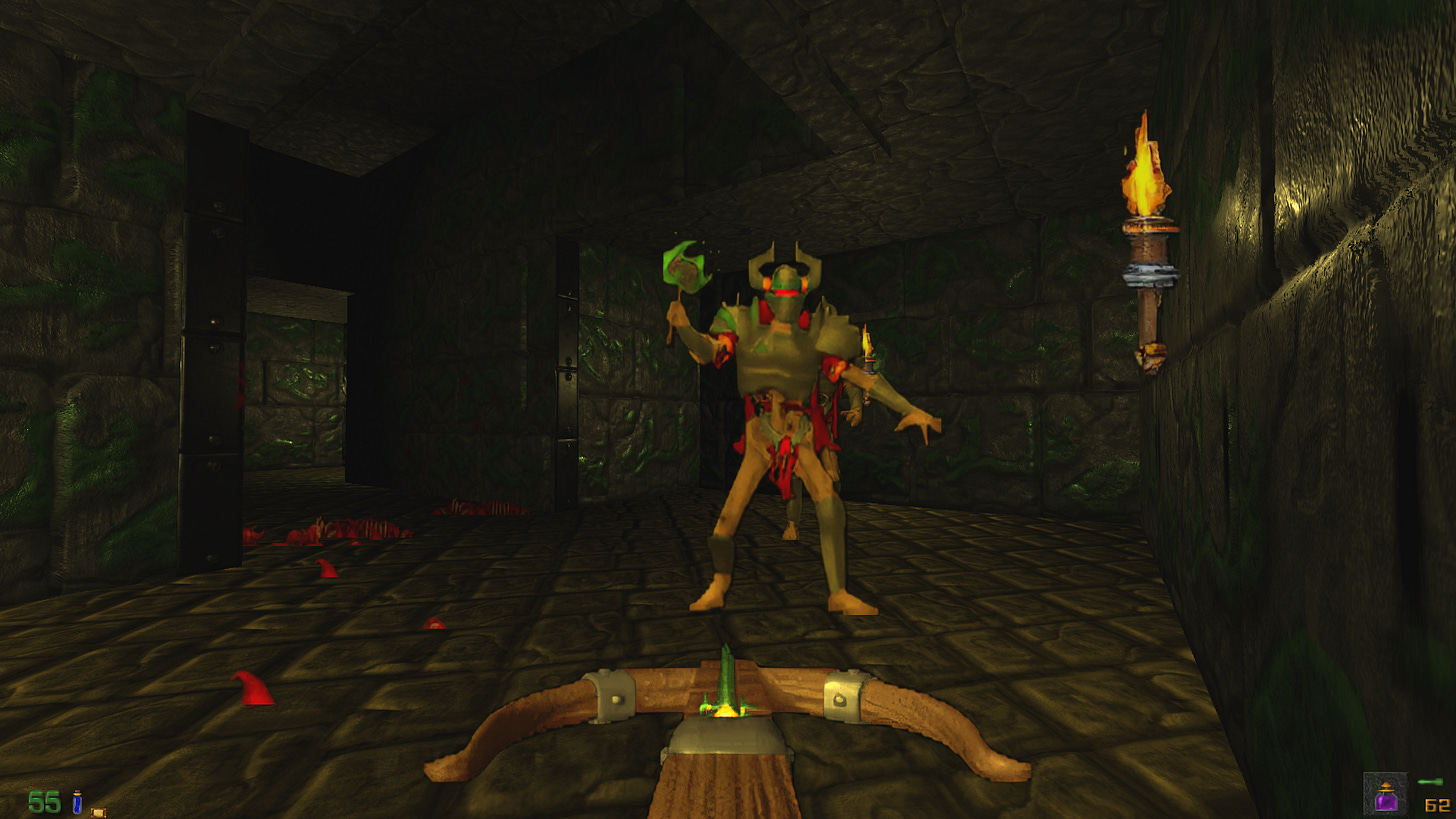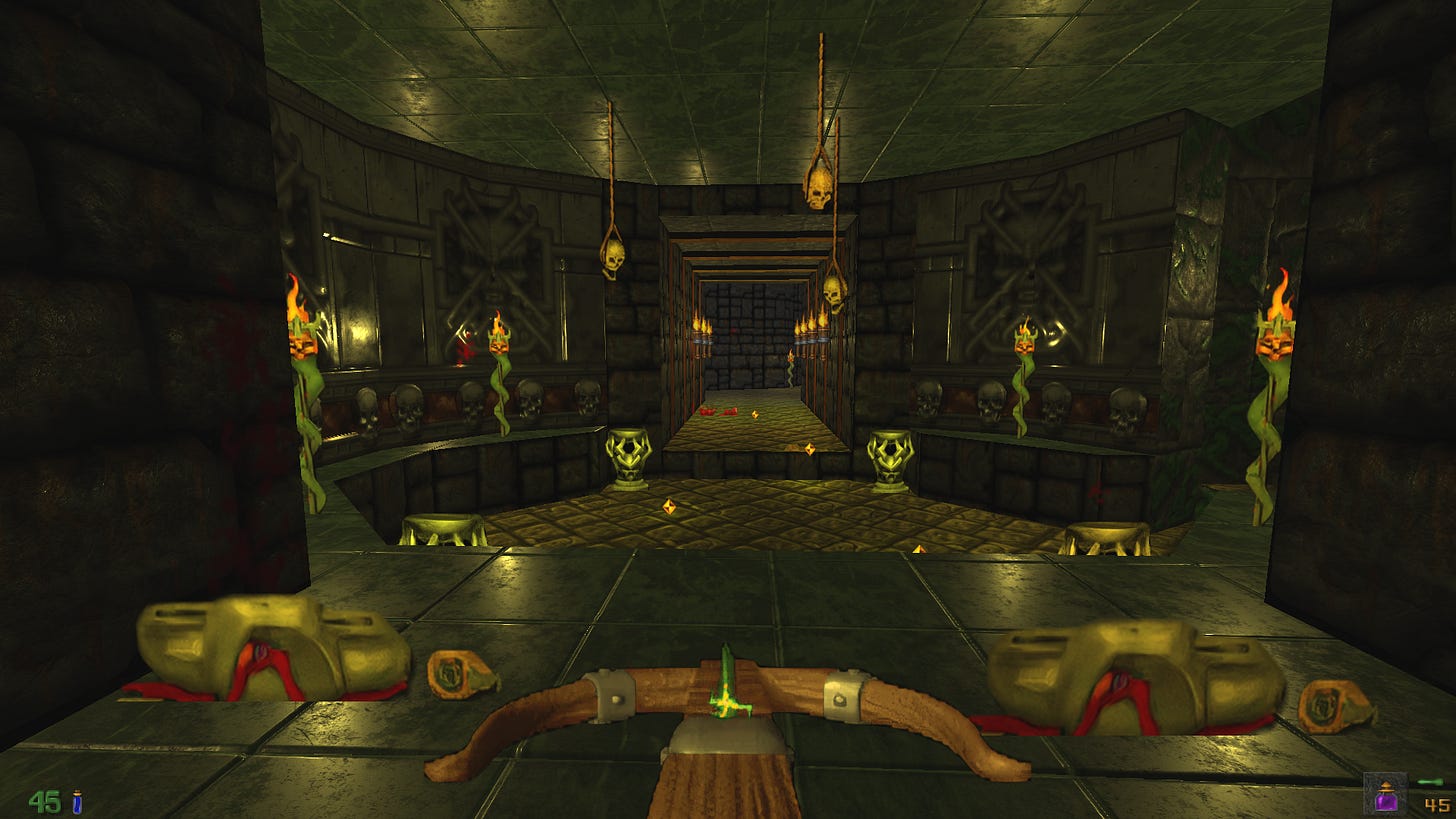October '95, second half. Very early and very chilly morning. With my parents I'm waiting for the bus to an airport. These buses are rare, so there is a formidable bunch of people gathered already. Minutes drag. I look up at the skies that slowly turn from deep blue to plain white-n-gray. And it occurs to me that these skies look almost exactly as those in ‘Heretic’, the game that I just started playing recently. In fact, the developers clearly used a photograph when making that background. It would later be called 'a skybox'.
'Gotta finish it on my return', I say to myself. A schoolboy in his mid-teens, I was unaware what kind of bliss had been waiting ahead of me over the next several days.
And what was to come afterwards.
Yes, just when Facelifted Gaming had been launched two years ago, I had covered Heretic, and the modernizing efforts, but did so in a very short form. As the 30th anniversary of the game draws closer, it’s a good time to refresh the memories.
Originally released in the last days of 1994 (in NA as a shareware), it was called 'a supernatural combat action game'. Essentially it was a dark fantasy (with a no-small gothic whiff) remake of id Software's Doom/Doom II, it was handled by Raven Software, although with id Software's John Romero being the producer. The game ran on idtech 1, aka Doom engine, and got released on DOS, Mac OS and then-yet-actual RISC OS.
The gameplay is almost the same as that of Doom: player is to navigate complex labyrinths, collecting weapons, ammo, and some power-ups, as well as colour-coded keys necessary for progression. The main goal is to reach the endpoint marked with a blue trident - or blue lights.

At the finishing levels it was necessary to bring down certain bosses. However, they would be encountered again later, as sort of common enemies (but still as strong).
But there were some formidable changes to the engine and capabilities. First, a certain artifact, aptly called 'Wings of Wrath' enabled flying around. Then player now could look up and down within certain angle. Some sectors (moving walls, moving ceilings or floors) could push the player now - or squish them if the player wasn't paying enough attention to their surroundings.
Then there was an inventory system that allowed to store the collected power-ups for further use. Standing out among them was 'Morph Ovum', a magic egg that could transform a common enemy into a very aggressive chicken. If such an object hit the player character, he would get transformed into a chicken too becoming very fast, small, and easily gankable.
Ah, and the 'cockadoodledoo' cheat code did the same.
Finally, there were so-called Tomes of Power, the artifacts that altered and empowered the damage (as well as character and animations) of the weapons. On their own, those were more or less the 'fantasy' versions of Doom arsenal, but with Tomes of Power active some of them got way more interesting.
The final boss was totally nasty. A 'serpent rider' named D'Sparil, he indeed came at you mounting a 'Chaos Serpent' - a large-headed green walking flamethrower that required a lot of 'pepper' to get dropped.

But just when you get happy that this monstrosity is finally down, the actual problem - D'Sparil himself - ariseth and shineth, and then the real fight commences. First, this scum keeps phasing around, while blabbering loudly and launching lightnings at you. Besides, he soon starts summoning platoons of his 'disciples' those are nasty enough on their own. So it takes the player being all eyes and run fast around, or soon they will be helplessly watching enemies turning upon each other.
Eventually the red robes-donning figure screams enshrouded in lightnings, turns into a skeleton and falls to the ground.
The way out is open... But it doesn't lead home.
Like other Doom engine-based games, Heretic became a playground for coders and artists once the engine had been released - for non-commercial use in 1999, and under GNU GPL-2.0-only - in 2008.
This led to ports to Linux, Amiga, Atari PCs and it appears there was even a shareware version for Dreamcast.
But not just that. Already by the mid-2000s Doom Engine got updates that enabled 3D objects support, dynamic lighting and higher resolutions, as well as completely free mouselook, and jumping.
Fast forward to now, and there are essentially two 'main' ports of the game: Doomsday Engine and GZDoom.
GZDoom version has a very significant advantage: it supports PBR materials - a close simulation of physically correct surfaces utilizing the stack of textures that regulate such parameters as roughness, reflectivity (specularity), metal/dielectric ratio, finer relief (normal maps) and more significant height bumps. In the screenshot below one can see that the masonry stands out as if it is a 3D object, but it's just a well executed texture, and the engine unholy trickery magic.
This comes at the price, though: the GZDoom package with all the textures has the size of 1.12Gb. Then goes 291.62Mb1 pack with the original textures and sprites (including enemies animations, etc.) massively upscaled by the means of neural networks. Aptly called it retains the original art, but makes it more high-fidelity. However, use of PBR materials and advanced lighting changes the overall game feeling rather dramatically.
But, last, not least, there is Reshade options (comes with GZDoom pack) those take things further with on-screen effects. I have eventually enabled not just preset effects, but a few extras such as Chromatic Aberration, and CRT shader that, upon some fine-tuning, looked just terrific.
Quite unfortunately, those effects are not seen on the screenshots: I used Vulkan renderer, and it does not render screenshots with Reshade effects, whereas using OpenGL gives a much worse image quality:

With all The game totally shines with all of these updates, and even though Reshade effects can downgrade the FPS count, the overall impact proved to be rather insignificant.
Now, there are some talks about possibility of the revival of the Heretic/Hexen series, given that both id Software and Raven Software now belong to Microsoft via its purchases, and all the copyrights are finally consolidated. Sort of…
But, we can really consider Heretic (and original Hexen) already remastered in full.
…Things aren't that good for Hexen II or Heretic II, two very different games based off the various flavours of heavily revamped Quake engine.
But it's the different story.
...It's November, '24 now. The real-world counterparts of Serpent Riders have the upper hand, like, everywhere. So many people keep falling under their ‘spells’, and are literally willing to kill, die, and imprison yesterday friends to keep hearing them.
And that epic wild-eyed hero, a 'heretic elf' with a flaming wand that stands tall against the hordes of murderous monsters - and reaches the source of damnation and prevails..?
Like unicorns and elves, such heroes only exist in the imagined worlds.
Yet, however unfriendly these worlds may appear, they are so often a safer haven compared to reality.
And yes, thank you, id and Raven people, for this. And for the childhood memories, and for longevity of your art too.
In fact, the archive contains versions of the same textures adapted for Doomsday Engine and GZDoom. Only the appropriate version works.














